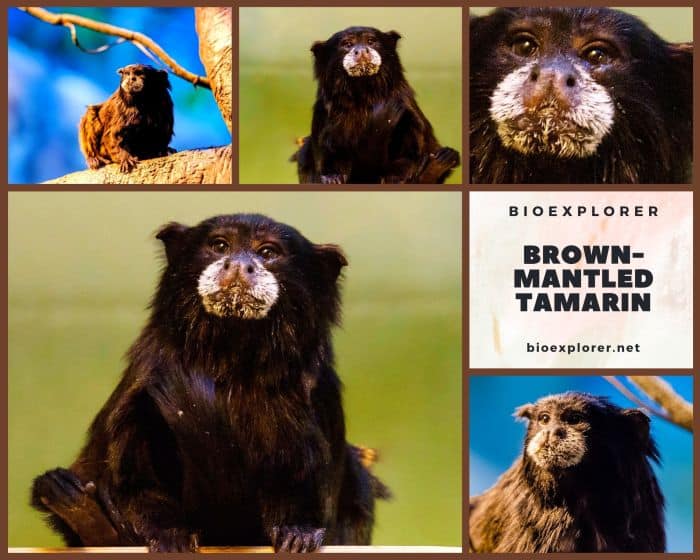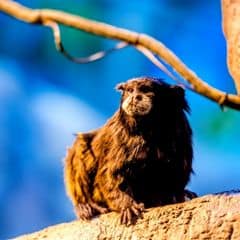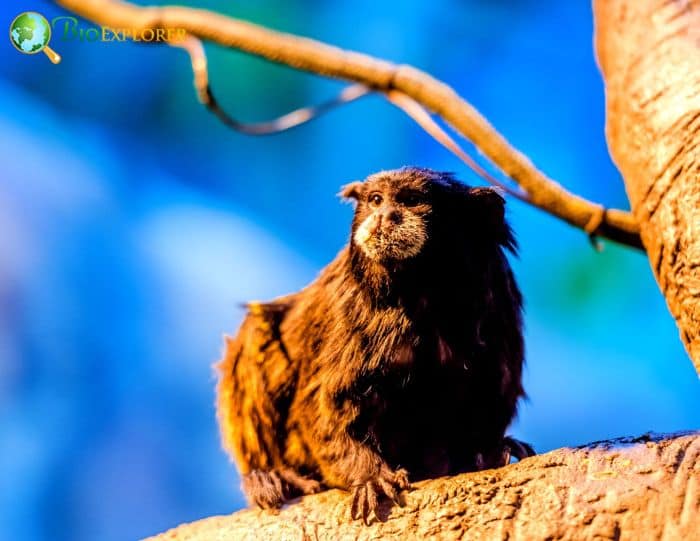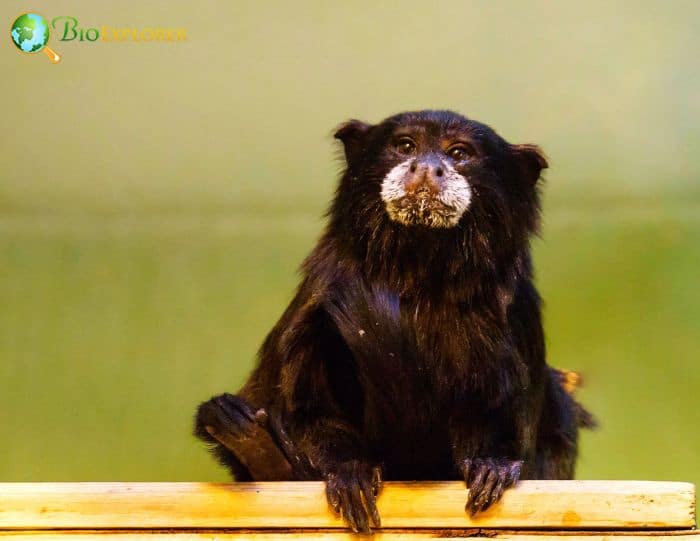
| Animalia | Primates | Callitrichidae | Leontocebus | Leontocebus fuscicollis |


- Common Name: Brown-mantled Tamarin
- Taxonomy Classification Year: 1823
- Monkey Size: 21 to 23 cm (8.1 to 9.1 in)
- Skin Color(s): Bright orange, black, or white
- Habitat: Rainforest
- Diet: Omnivorous
- Native Countries: Bolivia, Brazil, Peru
Brown-mantled Tamarin Distribution
Brown-mantled Tamarin Characteristics

The brown-mantled tamarin[1], also called the Spix’s saddleback tamarin, is a species of saddleback tamarin native to South America.
- Dense, dark fur covers this small New World primate’s arms, shoulders, and torso.
- On its back, Mother Nature painted a patch of coat, mixing yellow-orange stripes with patches of black hair, and created a speckled pattern called “agouti” (giving the monkey its “saddle“).
- The monkey’s hindquarters are covered in yellow-orange fur, and black fur clings to its long tail and extends to the tip.
- Long, narrow hands, considered an adaptation, help the saddleback tamarin to reach into small crevices and catch insects.
What Eats Brown-mantled Tamarins?
Ocelots (Leopardus pardalis) feed on Brown-mantled Tamarins in the wild[§].
Brown-mantled Tamarin Facts

- The brown-mantled tamarin is sympathetic to the tiny tamarin, sharing the same habitat in the counties of South America and often attacking the gum holes of this species.
- The species are considered “phyletic dwarfs, ” meaning their small size is linked to their evolutionary development.
- Like all members of the family Callitrichidae, except the Goeldi tamarin, saddleback tamarin monkeys give birth to fraternal twins (two eggs are fertilized by two separate sperm), more commonly called “non-identical” or “fraternal” twins.
- They may not be identical twins, but these tamarins have been called “cell mosaicism” thanks to a genetic phenomenon called “hematopoietic chimerism. “.
- Unlike its close cousin, the mustached tamarin (Saguinus mystax), which selects roosting sites high in trees and never uses the same site for more than 2 consecutive nights, saddleback tamarins select roosting sites in lower tribunes and use the same site for up to 4 consecutive nights.
Suggested Reading: Types of Monkeys | Black Leopard Characteristics
Cite This Page
APA7MLA8Chicago
BioExplorer.net. (2025, April 14). Brown-mantled Tamarin. Bio Explorer. https://www.bioexplorer.net/animals/mammals/monkeys/brown-mantled-tamarin/.
BioExplorer.net. "Brown-mantled Tamarin" Bio Explorer, 14 April 2025, https://www.bioexplorer.net/animals/mammals/monkeys/brown-mantled-tamarin/.
BioExplorer.net. "Brown-mantled Tamarin" Bio Explorer, April 14 2025. https://www.bioexplorer.net/animals/mammals/monkeys/brown-mantled-tamarin/.










